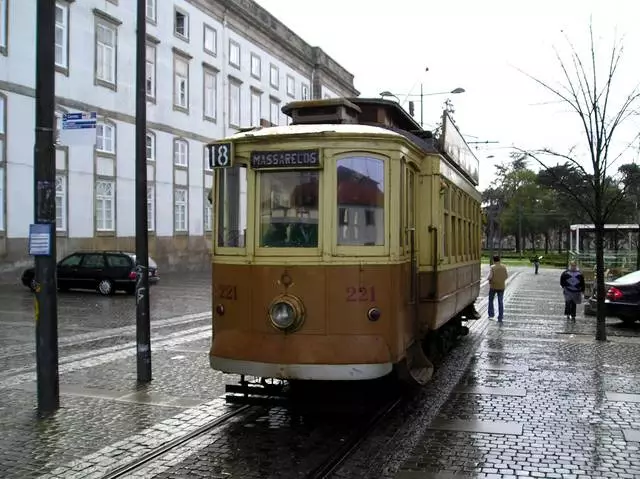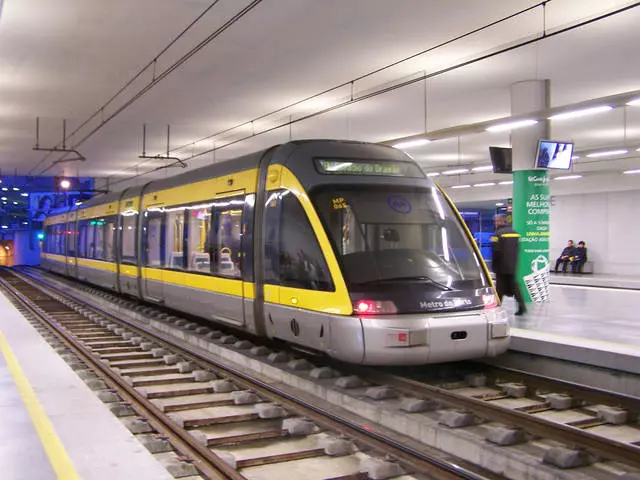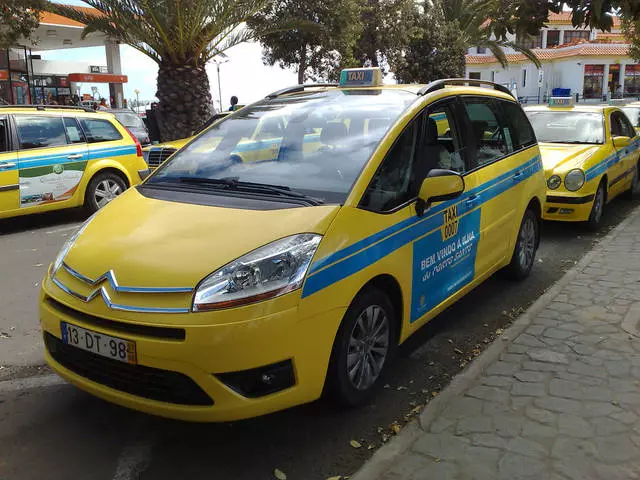Transport connection for the city of Porto plays a very important role, since this city is located unusual - on large elevations, at the mouth of the Douro River; To satisfy the needs of the movement of local residents, transport here is needed diverse, sometimes unusual for visitors: for example - the funicular. There are those that can be seen in any major European city - Metropolitan, trams and buses. Guests of the city can take advantage of different types of tickets, including those that allow you to significantly save money to move and visit local museums. Before going to get acquainted with the city, carefully worked the route, considering which of local attractions you want to see. To make a clear plan of the inspection of the city, you can immediately understand what types of transport here will have to use.
Buses
The bus transportation system within the city is under the control of STCP. Transport goes around both the day and at night; In the dark time, the traffic interval is about an hour, buses depart from the street. ALIADOS, starting with the o'clock in the night, and work until 05:30.
For buses, Rede-Expressos can be reached other cities in Portugal - for example, the road to Lisbon will cost about fifteen euros, the trip will last three and a half hours. During the day, buses to Lisbon are sent twelve times. Some transport follows further to Algarve. To go to the city of Braga will cost a little more than five euros, it will take a little more on the road.
Trams
It was in the port for the first time in the Iberian Peninsula, a transport connection of this kind was established. This happened in 1872. To date, the city tram system consists of three branches that cross the central portion: Line 1 - stretches next to the river to the Ribeira region; Line 1e (differently "1") is directed down to the river to Foz Douro; The third - Line 18 - goes upstairs, to the church of Igreja Do Carmo and to the Gardens of Jardim Do Cordoaria. The compositions go through every half hour, from nine in the morning to seven in the evening.

Metropolitan.
The subway in the port includes six branches on which 82 stations are located. With this transport message, the city connects with five suburbs: Vila Nova de Guy, Vila-do-Konde, Maya, Matosinyush and Povea de Warzin. The start of the underground is six in the morning, he closes in half the second night. Monitoring the metro system is driven by TransDev. More detailed information about the Metropolitan port you can get on the official website: http://www.metrodoporto.pt/pagegen.aspx.

Railway transport
Railway communication on routes that pass through this city is controlled by CP. From Lisbon in the port you can reach the high-speed train - in three hours and about twenty euros. Get out of the port to the towns that are in the directions of Brage, Aveiro, Himara Sima or in the valley of the river. Door is more profitable on the trains: it will turn out several times cheaper.
About the funicule
Using the only funicular port, two urban areas are connected - Ribeiru and Batalia. Control over these carriages is carried out by Transdev's carrier (it, as I wrote above, also controls the local metro).
For a ticket one way to pay two euros. You can use Andante travel cards. From November to April, the funicular works on schedule from 08:00 to 20:00; from May to October - from 08:00 to 22:00 (on Fridays and Saturdays - until midnight); In August, the funicular is also open until midnight.
Taxi service
In this city, moving on a taxi is not very expensive. On cars are counters. Green flames means that the car is busy. When landing with a passenger takes 1.10 euros, and then for every next 175 meters - 0.05 euros (at night - for every 138 meters of the journey). The road beyond the city is considered a kilometer - one kilometer costs 1.80 euros. In the dark time of day - from 22:00 to 06:00, and on weekends, the fare is twenty percent more expensive. The ride in the city center will not be more expensive than five euros. It is customary to pay tip taxis - ten percent of the amount for the trip. You can find the car directly on city streets or use the order service by phone - for example, In Taxis Invicta.

About tickets
With the payment system for travel in the port is not so easy. The price of travel in public transport depends on how many transport areas crosses the passenger during the way. Suburbs in this zone system are also taken into account. A ticket can be from 1.2 euros per trip if you do not cross the limits of one transport zone, and up to five euros - if you move between all eleven zones. In addition, there are tickets that give the right to move an unlimited number of times during the day: if its action applies to one zone, such a passage costs 4.15 euros; If all eleven is 16.7 euros.
Citizens mainly use a payment card Andante Created in the Transportes Intermodais Do Porto service (TIP). With this card you can enjoy all types of public transport, including the funicular and suburban train. The card costs 0.5 euros, it can be replenished in automata; It is programmed by the number of zones or by the number of trips.
Andante Tour Card
This card is exactly what tourists need: if you buy it, then the need to understand local transport areas will disappear; At the same time, you will have the opportunity to use all kinds of urban transport - STCP buses, metro, cuelaisome and suburban electricians. The map that is valid for a day is worth seven euros, the one for three to three.
Ronto Card
Ronto Card is a map that also allows you to use local public transport without restrictions, and in addition, it is possible to visit urban museums and attractions for free or discount, buy goods in some stores and enjoy cruise transport on the Dora River. Such a useful card, valid for one day, costs five euros (without the right to travel in transport); 10.5 euros - with the right to use transport; Ronto Card is worth 17.5 euros for two days, by three - 21.5.
